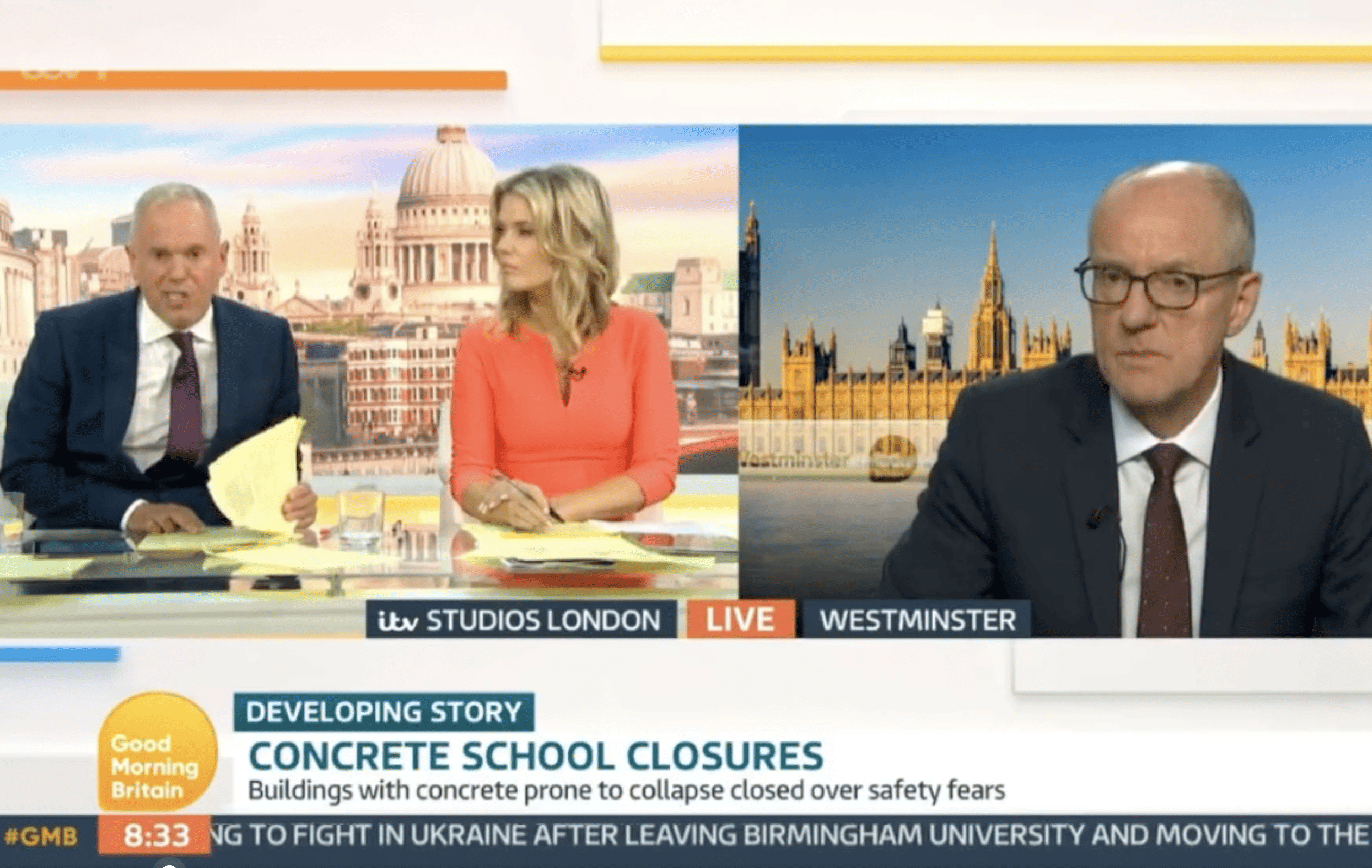
Ministers are facing calls for transparency over the scale of aerated concrete in public buildings after schools were forced to shut classrooms just before the new term.
Experts have warned that the crisis over reinforced autoclaved aerated concrete (Raac) could extend beyond the education sector – with healthcare settings, courts and offices also potentially at risk.
Chairwoman of Parliament’s Public Accounts Committee Dame Meg Hillier warned Raac is just “the tip of the iceberg” of a crumbling school estate, telling The Times the state of some public buildings was “jaw-dropping”.
Opposition parties are demanding information about the scale of Raac across the public sector estate, with Labour calling for an “urgent audit”.
Former home secretary Dame Priti Patel added further pressure, telling the BBC the closures were “deeply concerning” and would make the start of term “quite difficult”
It comes after 104 schools and colleges were told by the Department for Education to partially or fully shut buildings just as pupils prepare to return after the summer holidays.
Though not confirmed, it is estimated that around 24 schools in England have been told to close entirely because of the presence of Raac, the PA news agency understands, and schools minister Nick Gibb has admitted more could be asked to shut classrooms.
Speaking to Good Morning Britain on Friday, Rob Rinder brought up a clip of Gibb speaking in parliament earlier in the year ‘giving a commitment’ that they would publish information about at-risk properties before summer recess.
“That hasn’t happened, has it?” Charlotte Hawkins asked flatly.
Needless to say, Gibb was left floundering:
Related: Tory MPs submitting letters of no confidence in Sunak